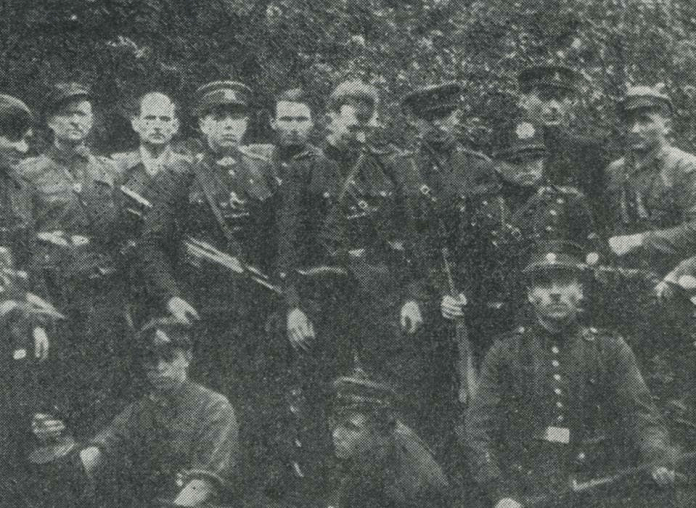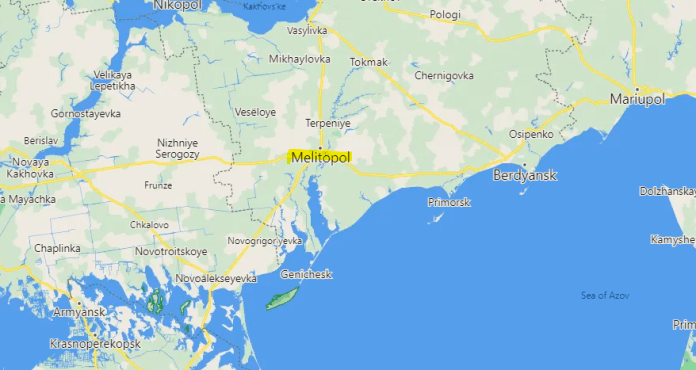World-Class Ballerina and Twelve-Year-Old Protégé Among Those Murdered by Ukraine

To receive Global Research’s Daily Newsletter (selected articles), click here.
Follow us on Instagram and Twitter and subscribe to our Telegram Channel. Feel free to repost and share widely Global Research articles.
***
On August 4, Ukrainian army rockets struck the drama theater of Donetsk and a neighboring area, killing famed ballerina and teacher, Galina Vasilyevna Volodina, and one of her protégés, Katya Kutubaeva, 12, a rising young star with a brilliant future ahead of her.
According to Canadian journalist Eva Bartlett, Volodina, Kutubaeva and the latter’s grandmother were walking to the theater on Pushkin Boulevard when they were torn to pieces by the blast. See YouTube video:
Bartlett interviewed Vadym Pysarev, Art Director of Donetsk State Academic Opera and Ballet Theatre, who was badly shaken by their deaths, saying that both were “very, very nice people.”
Pysarev worked closely with Galina, who he said had a very successful career as a dancer until she was about 35 and then became among the “best ballet teachers in the world.”
According to Pysarev, she had a “gift for dancers;” “training them from many different places including Germany, Moscow, Amsterdam, France,” and was “really something special.”
Because of her, they had developed a very successful dance school in Donetsk and the theater was always packed.
Pysarev said that Katya was an “incredibly talented ballerina who was destined for greatness—until Ukraine killed her.”
She was “very, very talented and very, very smart and had the possibility to be one of the best dancers—a star.”

Katya [Source: twitter.com]
Pysarev told Bartlett that “ballet is life, but war is horrible. For eight years the people of Donetsk have suffered terribly from the war and yet nobody has paid any attention or cared about us.”
Phoenix Program Redux
On August 18, The New York Times published a front page article about Ukrainian guerrilla fighters, or partisans, who carry out terrorist activity in violation of the international laws of war.[1]
Andrew E. Kramer reported that the partisans “sneak down darkened alleys to set explosives…post leaflets and graffiti with dark warnings for collaborators as part of their psychological operations….gather intelligence….and identify Russian targets for Ukrainian artillery and long-range rockets provided by the United States. They blow up rail lines and assassinate officials they consider collaborators with the Russians.”
These latter activities are easily reminiscent of the Phoenix program in Vietnam along with the Operation Rollback in Eastern Europe at the dawn of the original Cold War, where the CIA trained Ukrainian nationalists with fascist leanings to carry out terrorist acts in an attempt to overthrow a pro-Russian government.[2]

Anti-Soviet partisan fighters trained by the CIA to commit terrorist acts behind the Iron Curtain during the early Cold War as part of the Operation Rollback–whose exploits are being repeated in modern-day Ukraine. [Source: nationalwww2museum.org]
According to The New York Times, today’s partisans have become increasingly aggressive in “taking the fight against Russian forces into Russian controlled areas.”
The goal, said one guerrilla fighter, is to “show the occupiers [Russians] that they are not at home, that they should not settle in, that they should not sleep comfortably.”
Many Eastern Ukrainians, however, do not view the Russians as occupiers but rather liberators from eight years of Ukrainian army terror.
In a testament to the use of terrorist methods, one Ukrainan government official described a poisoning in the Zaporizhzhia region that killed around 15 Russian soldiers and the sabotage of a grain elevator in the Kherson region that prevented Russian forces from taking 60,000 tons of grain.
Partisans were also behind an explosion that disabled a railroad bridge connecting Melitopol to Russian-controlled Crimea.
The Ukrainian government made select partisans available to the media because they wanted to “highlight the partisans’ widening threat to Russian forces and signal to Western donors that Ukraine is successfully rallying local resources in the war, now nearly six months old.”
The partisans say they are civilians and thus their activity is regulated under Ukrainian law and not the international laws of war that prohibit, for example, a soldier from targeting a civilian officer.
One of the fighters, nicknamed Svarog, trained with a branch of the Right Sector and neo-Nazi Azov battalion.
After the Russian invasion in February, he was directed to a storage shed outside Melitopol, where he found slabs of high explosives, detonators, Kalashnikov rifles, a grenade launcher and two pistols equipped with silencers.

South eastern Ukraine and the Sea of Azov. [Source: ukrainetoday.org]
Svarog told Andrew Kramer that with little movement of the front lines, his group of partisans “strike stealthily in environs they know intimately using car bombs, booby traps and targeted killings with pistols—and then blend into the local population.”
One night this spring, Svarog and several members of his cell in Melitopol snuck through the town, and, by his own admission, planted a bomb into a wheel of a patrol car parked at the Russian-controlled police station.
When it went off the next day, a police officer was killed and another was wounded. “Anybody who would drive that car would be a traitor,” Svarog said. “Nobody there is keeping public order.”
Last week, Svarog’s cell booby-trapped the car of Oleg Shostak, a city official in Melitopol who joined United Russia (pro-Russian political party) and was targeted because he was suspected of “tailoring propaganda to appeal to local residents.”
After his car exploded, Shostak was badly wounded, though survived. Svarog was happy with the outcome because a signal had been sent to Russian collaborators: “you are never safe.”
Svarog and another partisan nicknamed Viking, said that the ranks of traitors whom the partisans have been hunting down include municipal and regional government employees and teachers who agree to work under the Russian educational curriculum—even when the majority of students in Eastern Ukraine are ethnic Russians from families opposed to the attempt to force Ukrainian language instruction and curriculum on them.
But according to Viking, “the Russians want to teach by their program, not the truth. A child is vulnerable to propaganda and if raised in this program, will become an idiot like the Russians,” he said. “A teacher who agrees to teach by the Russian program is a collaborator.”
*
Note to readers: Please click the share buttons above or below. Follow us on Instagram and Twitter and subscribe to our Telegram Channel. Feel free to repost and share widely Global Research articles.
Jeremy Kuzmarov is Managing Editor of CovertAction Magazine. He is the author of four books on U.S. foreign policy, including Obama’s Unending Wars (Clarity Press, 2019) and The Russians Are Coming, Again, with John Marciano (Monthly Review Press, 2018). He can be reached at: [email protected].
Notes
-
Andrew E. Kramer, “Ukrainians Behind Enemy Lines Tell Invaders: You’re Never Safe,” The New York Times, August 18, 2022, A1.
-
See Douglas Valentine, The Phoenix Program (New York: William & Morrow, 1990); Peter Grose, Operation Rollback: America’s Secret War Behind the Iron Curtain (New York: Mariner Books, 2001).
Featured image: Galina Vasilyevna Volodina (left), and twelve-year-old Katya Kutubaeva. [Source: slippedisc.com]


